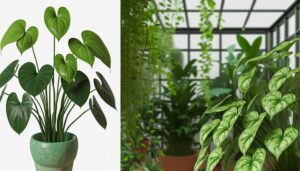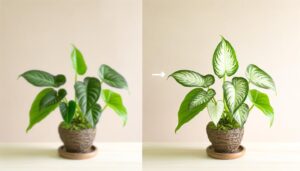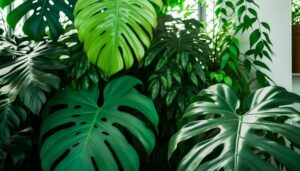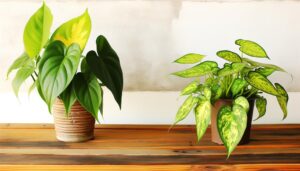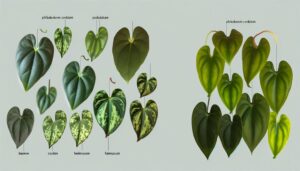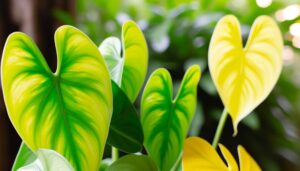Philodendron Polypodioides Vs Tortum: Expert Insights!
Philodendron polypodioides and Philodendron tortum, both native to Central and South American rainforests, exhibit distinct adaptations. P.
polypodioides thrives in humid lowlands with deeply lobed, leathery leaves optimized for diffused light. P.
tortum prefers mountainous regions, displaying finger-like, smooth leaves adapted for bright indirect light. The former exhibits a climbing growth habit with aerial roots, while the latter grows as a self-supporting shrub.
Polypodioides requires consistently moist soil, whereas Tortum favors slight dryness. Both species necessitate well-draining, organic-rich media and are susceptible to pests like spider mites and mealybugs.
Explore further for detailed differences and care insights.
Comparison of Philodendron Polypodioides and Philodendron Tortum
| Feature | Philodendron Polypodioides | Philodendron Tortum |
|---|---|---|
| Scientific Name | Philodendron polypodioides | Philodendron tortum |
| Common Name | Polypodioides Philodendron | Tortum Philodendron |
| Leaf Shape | Deeply lobed, fern-like | Deeply lobed, skeletal appearance |
| Leaf Texture | Smooth | Smooth |
| Leaf Color | Dark green | Dark green |
| Growth Habit | Climbing vine | Upright, vining |
| Mature Size | Up to 3-6 feet indoors | Up to 3-5 feet indoors |
| Light Needs | Bright, indirect light | Bright, indirect light |
| Watering | Keep soil moist but not waterlogged | Keep soil moist but not waterlogged |
| Temperature | Prefers 65-80°F (18-27°C) | Prefers 65-80°F (18-27°C) |
| Humidity | High humidity (above 60%) | High humidity (above 60%) |
| Soil Type | Well-draining, rich potting mix | Well-draining, rich potting mix |
| Propagation | Stem cuttings | Stem cuttings |
| Toxicity | Toxic to pets and humans | Toxic to pets and humans |
| Special Care | Regular misting and occasional fertilizing | Regular misting and occasional fertilizing |
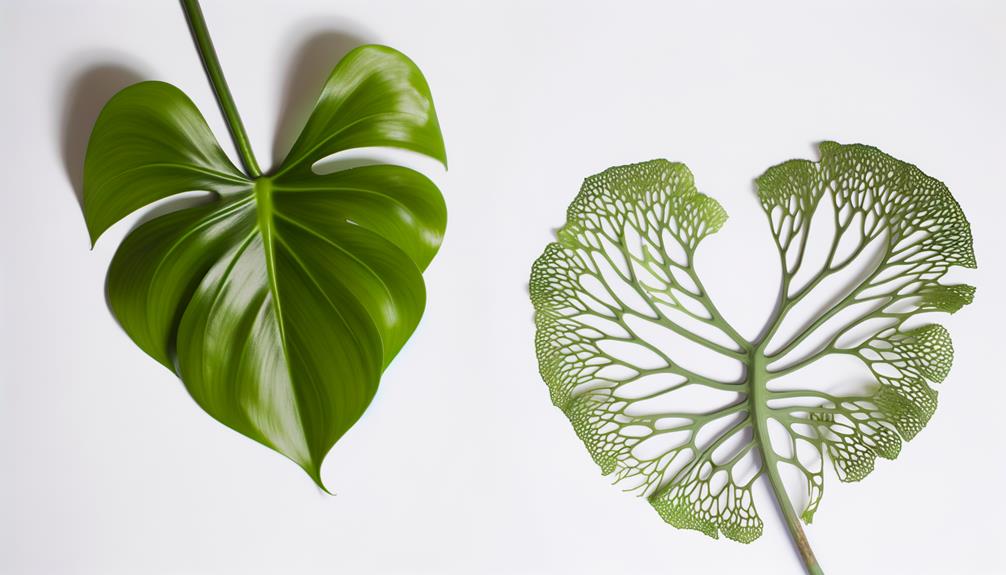
Origin and Background

Philodendron polypodioides and Philodendron tortum, both members of the Araceae family, originate from the tropical rainforests of Central and South America, where they exhibit distinct morphological and ecological adaptations.
Polypodioides is mainly found in humid, lowland forests, thriving under the canopy where diffused light prevails. It has adapted to high moisture levels and nutrient-rich substrates.
Conversely, P. tortum is more commonly located in elevated, mountainous regions, displaying a preference for well-drained, epiphytic environments. This species often colonizes tree trunks and branches, benefiting from increased air circulation and reduced competition for resources.
Both species’ natural habitats underscore their evolutionary strategies to optimize growth and survival, reflecting their ecological niches within these biodiverse ecosystems.
Leaf Structure and Appearance
In examining the leaf structure and appearance of Philodendron polypodioides and Tortum, notable differences arise in their leaf shape, texture, veining, color, and growth patterns.
Philodendron polypodioides exhibits deeply lobed leaves with a leathery texture and prominent venation, whereas Tortum features more delicate, finger-like leaves with a smooth surface and less conspicuous veins.
Additionally, the color palette of Philodendron polypodioides tends towards darker greens, while Tortum often displays a lighter, more vibrant green, reflecting variations in their physiological adaptations and growth habits.
Leaf Shape Comparison
The leaf morphology of Polypodioides and Tortum exhibits distinct characteristics. Polypodioides presents a more segmented, pinnate structure, with leaves arranged in a feather-like pattern.
Individual leaflets are attached to a central rachis, enhancing its intricate appearance. This pinnate configuration allows for greater surface area for photosynthesis and gas exchange.
On the other hand, Tortum features elongated, deeply lobed leaves that resemble skeletal fingers. The leaves are characterized by slender, deeply incised lobes that extend from a central vein, giving the leaf a highly dissected form.
This unique morphology may reduce water loss by minimizing the leaf surface area exposed to direct sunlight.
Texture and Veining
Both species exhibit distinctive leaf textures and veining patterns, with Polypodioides showcasing a smooth, glossy surface and prominent, evenly distributed veins, while Tortum features a rougher texture with a network of irregular, branching veins.
This differentiation in leaf surface and venation contributes to their unique aesthetic and physiological characteristics. Polypodioides’ smooth texture aids in efficient water run-off, while its well-spaced veins optimize nutrient transport.
Conversely, Tortum’s rough texture increases surface area, potentially aiding in water retention, and its irregular veins may allow for flexible nutrient distribution across the leaf.
| Attribute | Polypodioides | Tortum |
|---|---|---|
| Leaf Texture | Smooth, glossy | Rough |
| Vein Distribution | Evenly distributed, prominent | Irregular, branching |
| Water Management | Efficient run-off | Enhanced retention |
| Nutrient Transport | Optimized | Flexible |
| Physiological Impact | Streamlined | Adaptable |
Color and Growth Patterns
Displaying a rich spectrum of greens, Philodendron Polypodioides and Tortum exhibit distinct growth patterns that reflect their unique leaf structures and overall appearance.
Philodendron Polypodioides, characterized by its deeply lobed leaves, showcases a more compact growth habit. The leaves are typically a vibrant, uniform green, contributing to its lush, dense appearance.
In contrast, Philodendron Tortum displays a more airy and elongated growth pattern. Its leaves are intricately divided, resembling a skeletal structure, and often present a lighter, almost lime-green hue.
The differential pigmentation and leaf morphology between these species are adaptations to their respective environments, influencing light capture and moisture retention. Such distinctions are vital for horticulturists aiming to optimize plant care and aesthetic arrangements.
Growth Habits
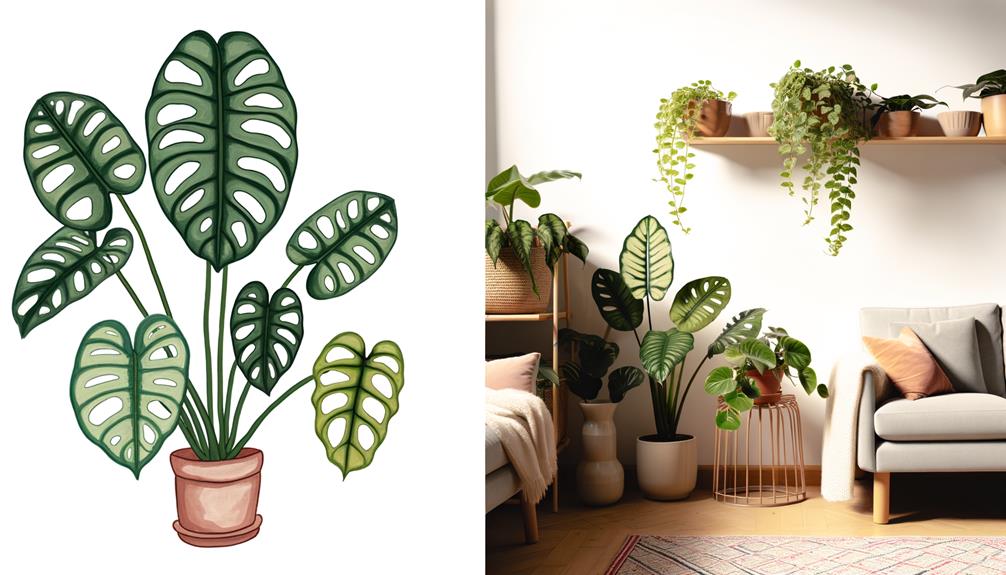
Philodendron polypodioides exhibits a climbing growth habit with aerial roots, while Tortum, also known as Philodendron bipinnatifidum, typically displays a more self-supporting, shrub-like structure.
The climbing nature of P. polypodioides is facilitated by its development of adventitious roots that anchor onto surfaces, enabling vertical growth. This epiphytic behavior allows it to maximize light exposure in its natural habitat.
In contrast, P. bipinnatifidum grows as a terrestrial plant with a robust, trunk-like base providing structural support. Its leaves emerge directly from the stem and spread outward, forming a large, spreading canopy. This self-supporting architecture is advantageous for stability and resource acquisition in ground environments.
Understanding these distinct growth habits is essential for appropriate care and placement in horticultural settings.
Light Requirements
The light needs for Philodendron polypodioides and Tortum differ noticeably, reflecting their unique adaptations to their respective natural habitats. Philodendron polypodioides thrives in low to moderate indirect light, mimicking the dappled sunlight of tropical forest understories. Excessive direct sunlight can lead to leaf burn and reduced photosynthetic efficiency.
In contrast, Tortum, also known as Philodendron bipinnatifidum, requires bright, indirect light to maintain its intricate leaf structure and robust growth. Insufficient light may result in elongated stems and diminished foliage quality. Both species demonstrate phototropic behavior, orienting their leaves toward the light source, underscoring the importance of ideal lighting conditions.
Understanding these specific light requirements is essential for fostering healthy growth and maximizing the aesthetic appeal of each plant.
Watering Needs
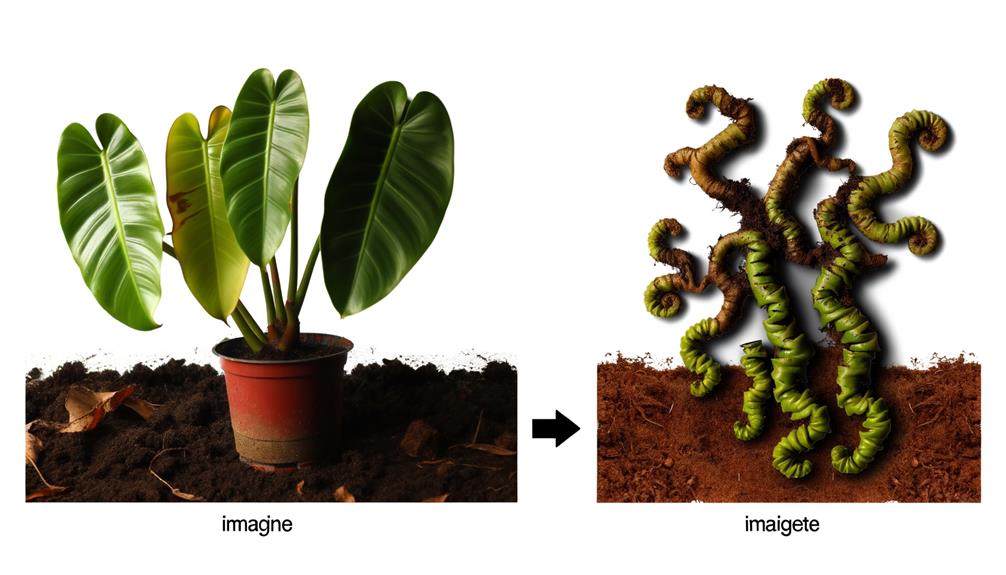
Both Philodendron polypodioides and Tortum have distinct watering requirements that are crucial for their best growth and overall health. Philodendron polypodioides thrives in consistently moist soil, requiring regular watering to maintain an environment similar to its native, humid habitat.
On the other hand, Tortum is adapted to more arid conditions and prefers its soil to dry out slightly between waterings.
Key points for optimal watering:
- Philodendron polypodioides: Keep soil consistently moist, avoid water saturation.
- Tortum: Allow soil to dry between waterings, preventing root rot.
- Water quality: Use distilled or rainwater to avoid mineral buildup.
- Seasonal adjustments: Reduce watering frequency during dormancy periods.
Understanding these needs ensures robust growth and health for each species.
Soil and Potting
Ideal soil and potting conditions are essential for the healthy growth and development of Philodendron polypodioides and Tortum, necessitating specific substrate compositions tailored to each species’ natural habitat preferences.
Philodendron polypodioides thrives in well-draining, organic-rich soil with a slightly acidic pH, reflecting its epiphytic nature. Conversely, Tortum benefits from a mix that mimics tropical forest floors, favoring a more loamy and moisture-retentive substrate.
| Aspect | Philodendron polypodioides | Tortum |
|---|---|---|
| Soil Type | Well-draining, organic-rich | Loamy, moisture-retentive |
| pH Preference | Slightly acidic (5.5-6.5) | Neutral to slightly acidic (6.0-7.0) |
| Organic Matter | High, includes peat and orchid bark | Moderate, includes compost |
| Drainage | Excellent | Good, but retains some moisture |
These conditions promote optimal nutrient uptake and root health, fostering vigorous growth.
Common Pests and Diseases
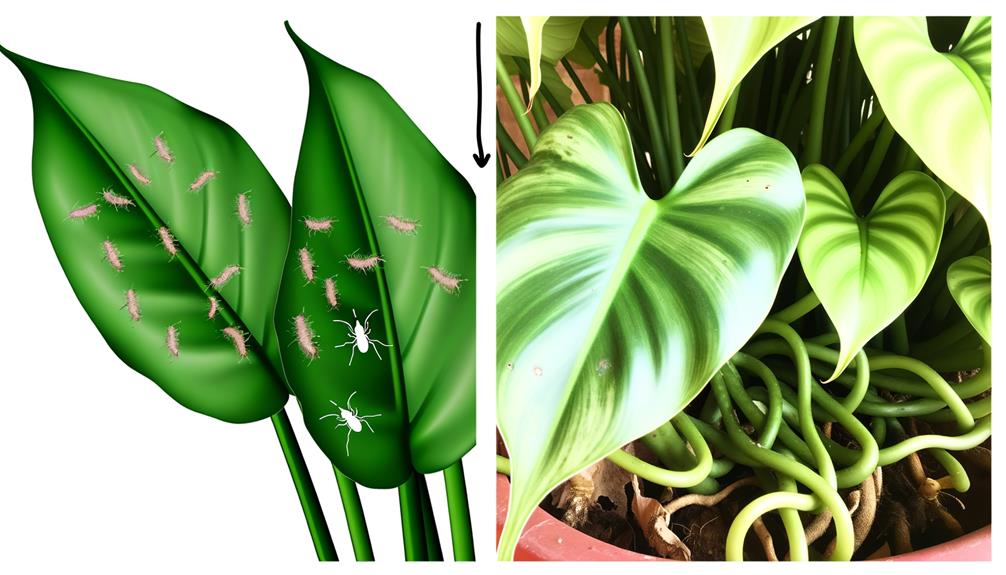
In the world of common pests and diseases, Philodendron polypodioides and Tortum are susceptible to a variety of pathogens and insects that can impede their growth and importance.
Both species are frequently afflicted by:
- Spider Mites: These arachnids cause stippling on leaves, leading to chlorosis and defoliation.
- Mealybugs: Cotton-like masses on stems and leaves, causing stunted growth via sap extraction.
- Root Rot: Often due to overwatering, this fungal infection results in blackened, mushy roots, compromising nutrient uptake.
- Bacterial Leaf Spot: Manifesting as water-soaked lesions, this pathogen can lead to necrosis and leaf drop.
Effective management involves regular inspection, maintaining ideal humidity, and employing appropriate insecticidal or fungicidal treatments to guarantee plant health.
Conclusion
In summation, Philodendron polypodioides and Philodendron tortum exhibit distinct botanical attributes, ranging from divergent leaf morphologies to varying growth patterns.
Best cultivation necessitates specific light and hydration conditions, alongside a meticulous selection of soil and potting mediums.
Careful attention against prevalent pests and diseases further maintains the plants’ health.
Hence, these intrinsic differences underscore the need for tailored horticultural practices to achieve best growth and aesthetic appeal in diverse environments.

